A Day with the Huawei Mate 30 Pro: Kirin 990 and 7680 FPS Slow Motion Tests
by Dr. Ian Cutress on September 23, 2019 4:00 AM EST- Posted in
- Smartphones
- Huawei
- Kirin 990
- Mate 30 Pro
- 7680fps
Daylight Photography Hands-On
One of the benefits of being a photography luddite is that the quality of smartphone cameras, both the hardware and the software, has come on leaps and bounds over the last decade. Smartphone photography is something that new entrants to the smartphone scene have difficulty on, because the main players are on their ninth or tenth generation of AI-accelerated photography features. If you are new with your first/second generation device, it is hard to play catch-up. But for today, Huawei is one of the companies leading the scene in computational photography.
For my short photography test, I’m pitting the Huawei Mate 30 Pro against my trusty P30 Pro. I also have the ROG Phone II here for an upcoming test, so I’ve thrown that in as well. I took seven day-time scenes from a trip to compare and contrast. All three phones are running in Auto mode, taking 10/12MP shots with pixel binning, with AI enabled.
Position 1: A Church
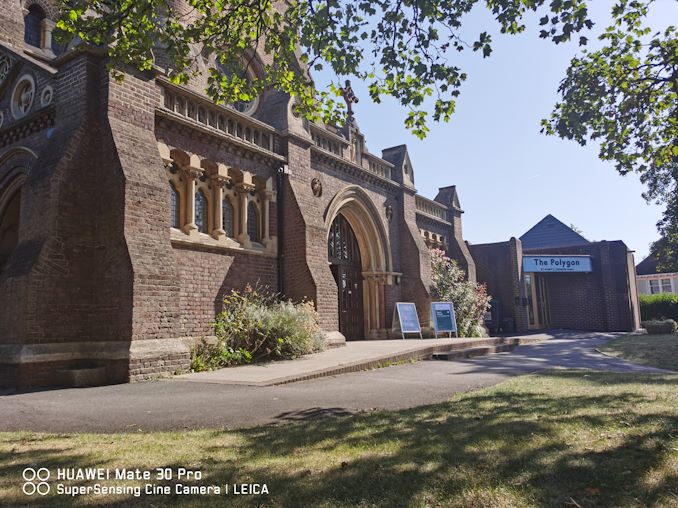

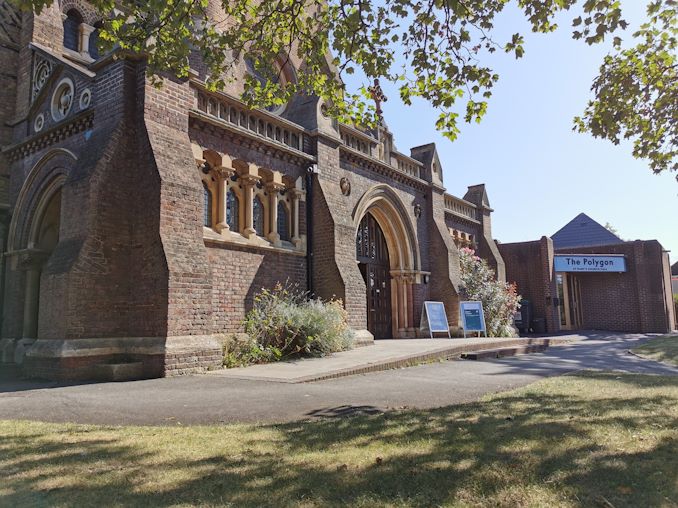
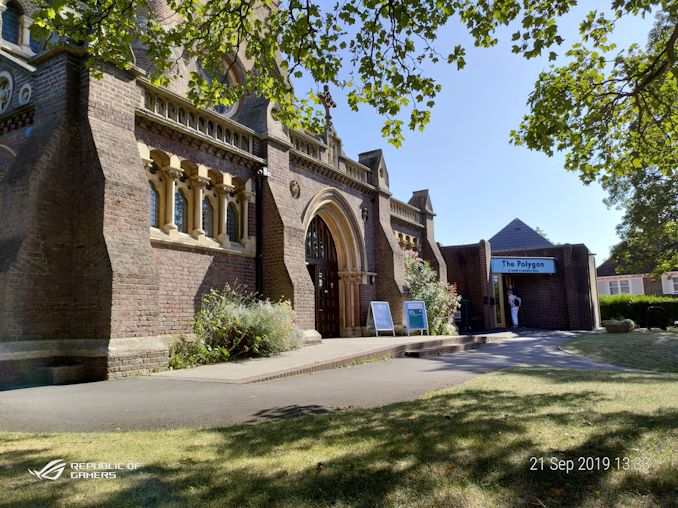
Mate 30 Pro | P30 Pro | ROG Phone II
Here we can see that the Mate 30 Pro is a little hazier around the words on the right, but the bricks on the wall of the Mate 30 Pro have a lot less noise on them. The ROG Phone II darkens the shadows quite a bit, whereas the two Huawei phones blend the scene a lot better.
Position 2: Clock Tower
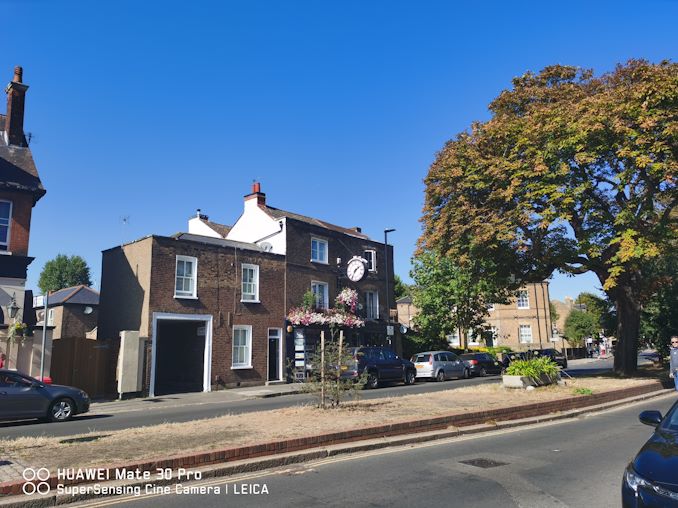

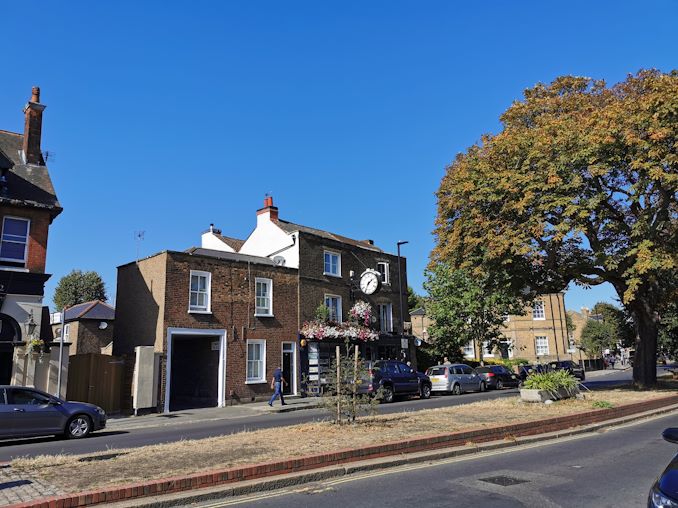

Mate 30 Pro | P30 Pro | ROG Phone II
In this instance the P30 Pro is darker on the brickwork than the Mate 30 Pro, however the Mate 30 Pro is a bit more hazier with less detail. Both phones used ISO 50 for this one, with the Mate 30 being at 1/4219s shutter speed compared to 1/3425s.
Position 3: Ealing Studios
This photo had a slight angle towards an incoming sun, to give a more difficult scene.
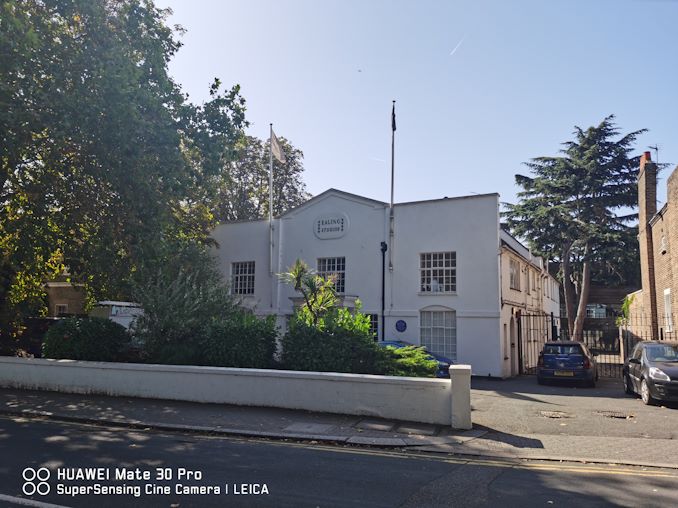

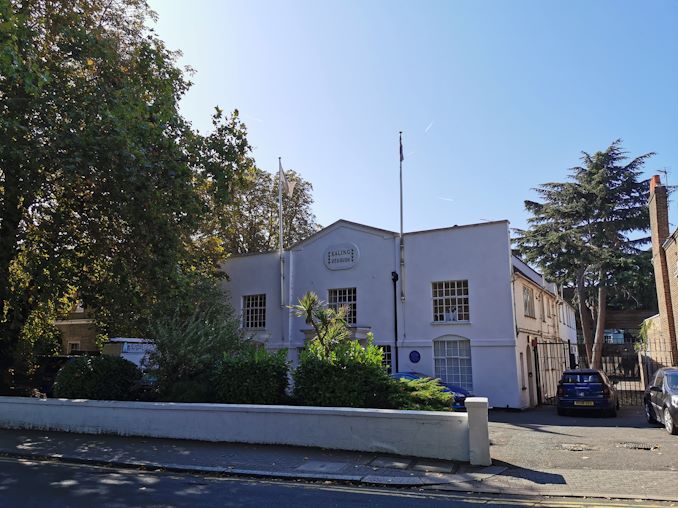
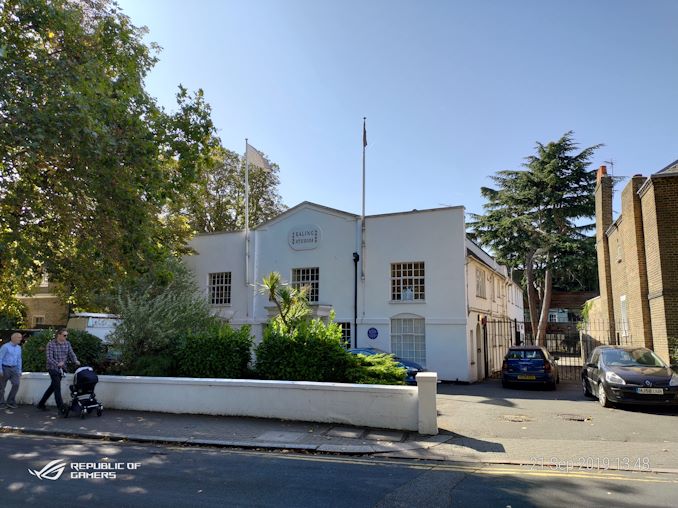
Mate 30 Pro | P30 Pro | ROG Phone II
Again we see that on the P30 Pro, compared to the Mate 30 Pro it is a little darker and in this case the building looks a lot bluer as a result. The sidewalk on the P30 Pro also looks blue, but on the Mate 30 Pro is truer to the real color.
Position 4: Macaroons
The artificial light here gives an interesting perspective – all three phones typically refresh at 60 Hz, but with the UK on its 50 Hz lighting system combined with a rolling shutter means that we get those wavy lines across the screen. Most modern smartphones now have a way of dealing with this, by detecting the light differential and synchronizing up. It still takes a good 5 seconds or so for the detection to work and kick in, however.
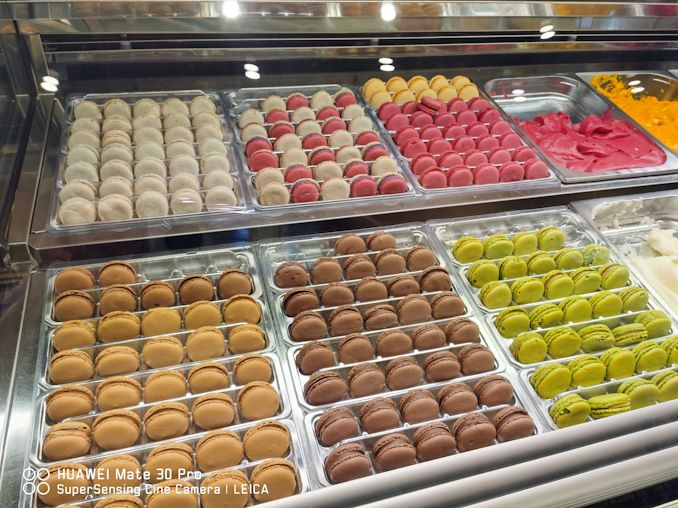

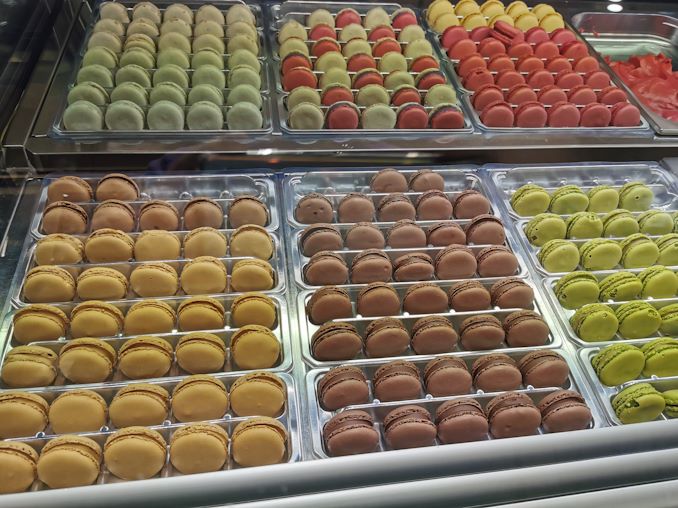
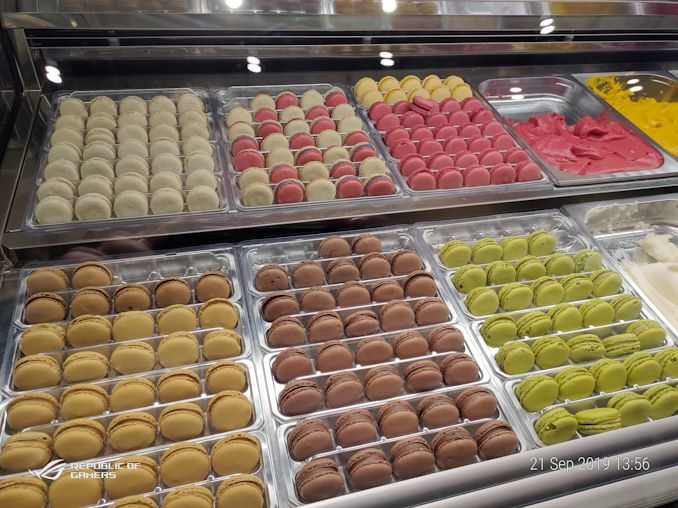
Mate 30 Pro | P30 Pro | ROG Phone II
The Mate 30 Pro makes the colors pop a bit more than the other two, but again we are getting some haziness in the camera and a lack of edge clarity in the distance or even on the yellow macaroons near the front.
Position 5: Ice Cream


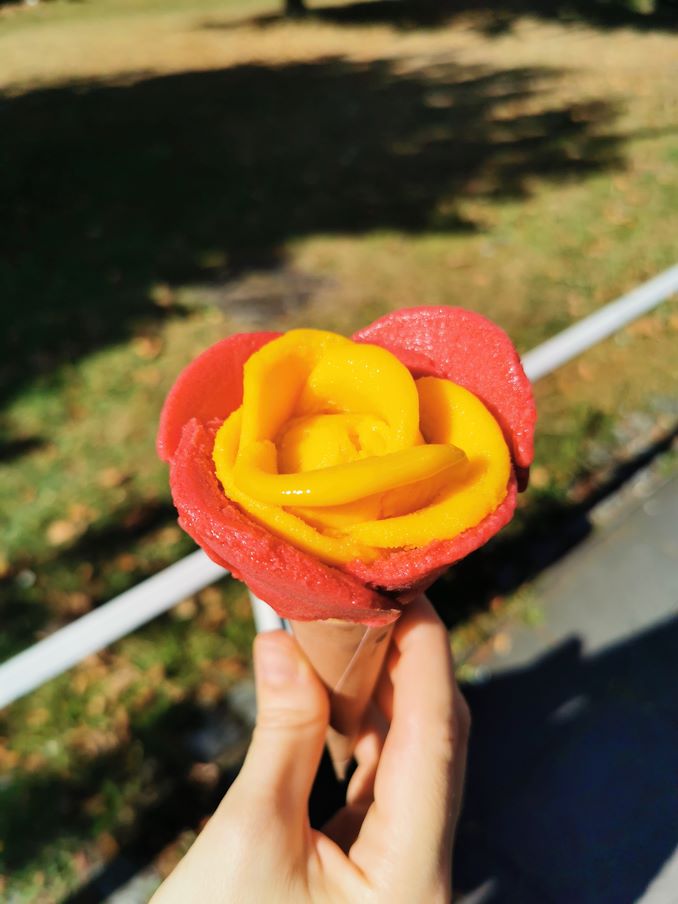
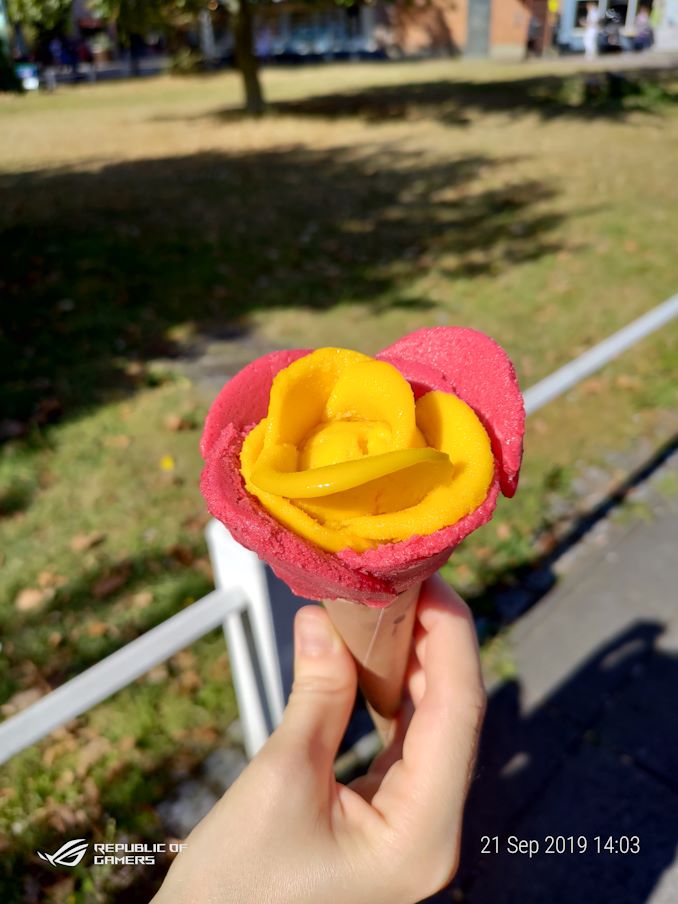
Mate 30 Pro | P30 Pro | ROG Phone II
This is more of a close up shot, and again we see the Mate 30 Pro make the colors seem more vibrant, but still a haziness in the image. I wonder if this is the bokeh going into overdrive. Impressively I prefer the ROG Phone II in this shot, as the picture is very clear and crisp.
Position 6: Shopping Center
This photograph was taken under shade in an open-air shopping mall, with Christmas lighting all strung up and ready to go. We have the sun coming in from the right, shining on a set of walls but leaving a lot of the shot in the shade.
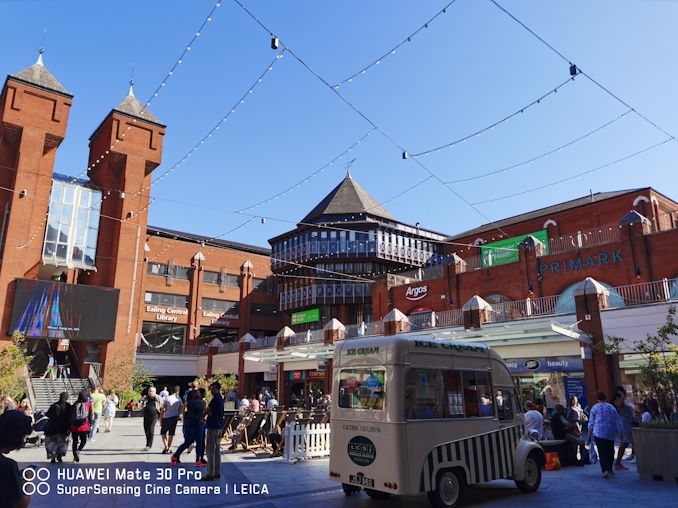

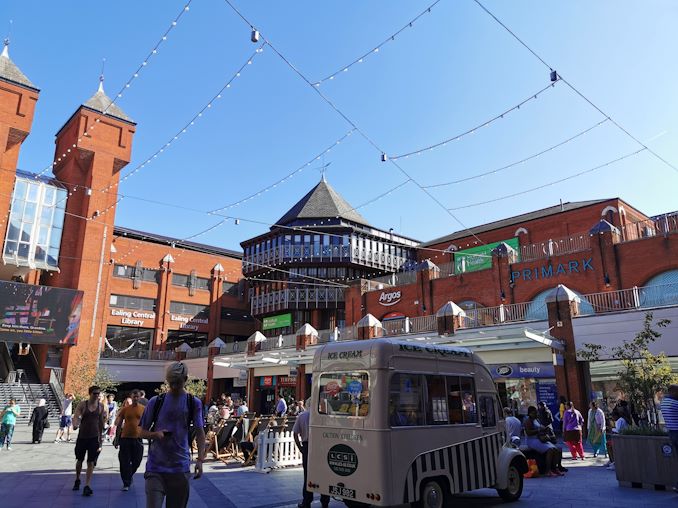
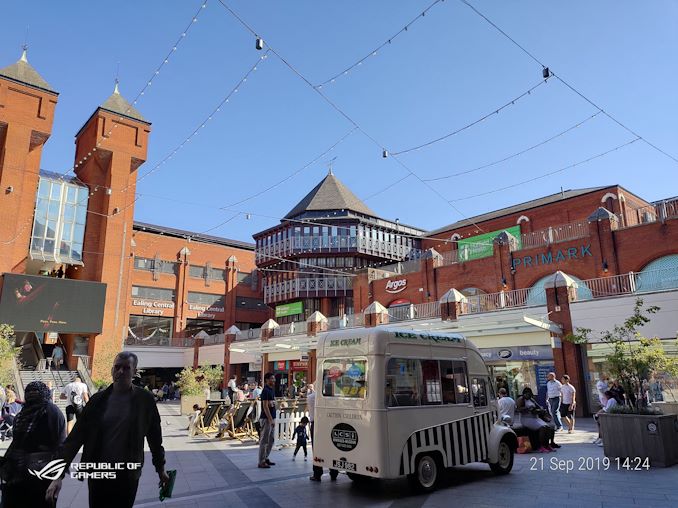
Mate 30 Pro | P30 Pro | ROG Phone II
For another scene, we have the P30 Pro being sharp, while the Mate 30 aims for more vibrant colors. In both cases, the floor is made very blue, whereas the ROG Phone, while not the most color vibrant shot, is probably the most true-to-life in most of the scene. Where the ROG Phone II falls short is the hanging lights, which both the Huawei’s depict quite clearly.
Position 7: Horse Statue
Another close up, this time of the shady side of a horse statue with the background containing a variety of Christmas lights.


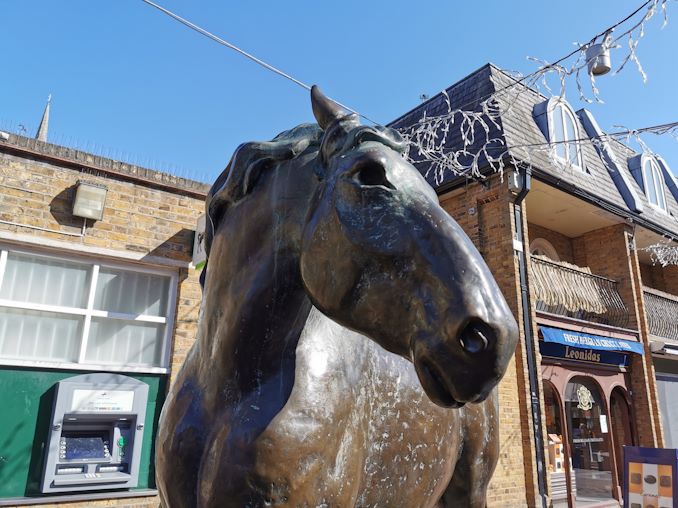
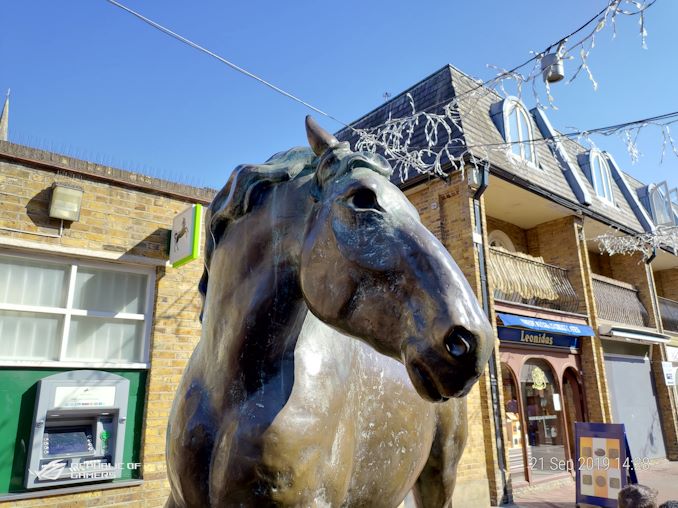
Mate 30 Pro | P30 Pro | ROG Phone II
With the Mate 30 Pro again being hazy in the periphery, this does seem down to an over-active bokeh implementation. The shadows and marks of the statue are easier to make out on the P30 Pro, which actually feels the most true-to-life out of the three shots. The ROG Phone II here seems to add an AI filter here that doesn’t work, causing some miscoloration and a lot of blur on the Christmas lights.










47 Comments
View All Comments
s.yu - Tuesday, September 24, 2019 - link
Andrei should definitely look into this.Haldi - Wednesday, October 9, 2019 - link
Seems like it has AI which helps you start recording at the perfect time, similar to Samsung.One thing I really miss one my XZ2 sometimes.
peevee - Tuesday, September 24, 2019 - link
" and other app stores, that contain the most popular applications (Facebook, Instagram, Whatsapp"And youtube or google maps are not as popular? BS. An Android phone without them is as good as useless.
SanX - Tuesday, September 24, 2019 - link
Add for comparison ASUS ROG II 12GB RAM 1TB storage, 6000 mAh battery, other processor phones like UMIDIGI latest phone with Mediatek Heliomaryammiahan - Thursday, September 26, 2019 - link
Thanks for this Post I think huawei mate 30 pro going to be a big hit and its camera features are most demanding features in smartphone.Cod3rror - Saturday, September 28, 2019 - link
Regarding the "Position 2: Clock Tower" picture. The auther says "however the Mate 30 Pro is a bit more hazier with less detail". I agree it's more hazy, but it definitely has more detail than P30 Pro.I am very impressed by Mate 30 Pro's details.
Haldi - Wednesday, October 9, 2019 - link
Ugs REALLY? I can do math myself...I know that 32 seconds on 30fps equal 960 frames in those 0.125sec which would be around 7680 frames in one Second...
But the Question is HOW?
You remember the Sony sensor which first made 960fps possible? They said it's impossible to render frames so fast, so they included onboard RAM on the sensor itself and transfer the data later.
The first Huawei phone which did 960fps simply recorded 240fps and used motion interpolation to upscale it to 960fps.
How can we be certain they didn't do anything similar here?
What kind of hardware tricks did they use to process 960 pictures in 0.125 seconds? Is the bus from Camera to cpu fast enough for that much data?
If so how comes we're limited to 0.125s why not use 0.25sec and 4gb of RAM?